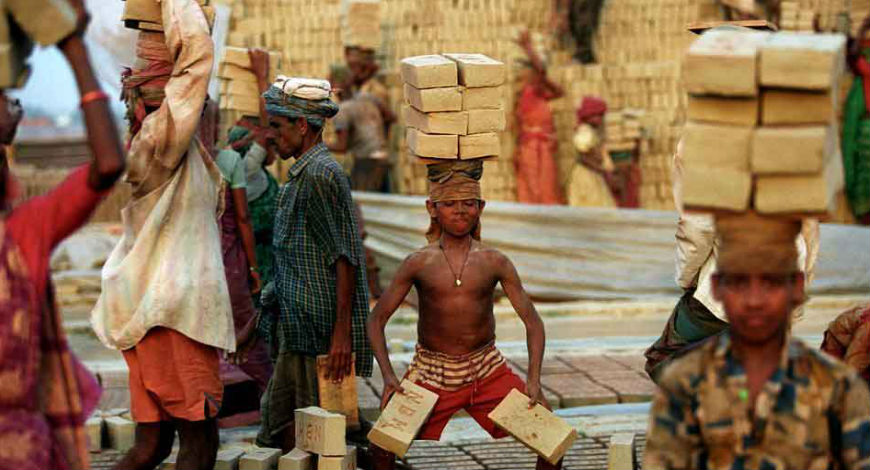 Davos to Delhi, Ludhiana to Trichy and Guwahati to Surat – the chorus to create jobs and develop skills seems to be getting louder by the day. With “disruption” set to become the word of the year 2017, the recently concluded deliberations at the World Economic Forum issued a wakeup call to develop talents. India got its mandate very loud and clear, given its 92nd rank on Global Talent Competitiveness Index in a 2017 report published by INSEAD.
Davos to Delhi, Ludhiana to Trichy and Guwahati to Surat – the chorus to create jobs and develop skills seems to be getting louder by the day. With “disruption” set to become the word of the year 2017, the recently concluded deliberations at the World Economic Forum issued a wakeup call to develop talents. India got its mandate very loud and clear, given its 92nd rank on Global Talent Competitiveness Index in a 2017 report published by INSEAD.
A jobless growth of the Indian economy at 7 percent makes the issue even more severe. The employment elasticity is on a decline (0.15 in 2015, i.e. for every PPT growth in GDP 0.15 ppt growth happens in employment) and the working age population is growing by an additional 100 million by 2025. Therefore, India stands at crossroads today as it aspires to reap a demographic dividend. However, it is not a one-dimensional problem. It is a multitude of complex structural issues and disconnects. There are jobs, but no skills and vice versa. Moreover, there are jobs, but no family supporting wages. The clock is ticking away, and it is time we view this as a composite problem; not just solving a problem in isolation, but skills that lead to jobs, which offer family-supporting wages.
Vocationalization of education at school level is therefore critical to uplift a large population, so that we can make a successful transition from a society that values “what do you know” to “what can you do”; a transition from haphazard development of skills to developing the right skills at the right place and time in required numbers. And skills not for the sake of skills, but for helping the youth to get a job, stay on the job and make progress on the job. The linkage with end outcome is critical because every year more than 5 million out of 9 million stop at 12th grade and for Government schools, this percentage is badly skewed.
And this number is only going to get worse. There is even a larger drop in government schools at 9th and 10th grades. A 10th or 12th-grade education would only command very low starting and lifetime wages in this modern economy, leading to unhappy and unstable families. Many jobs, such as nurses’ aides, home health care workers, beautician, automotive mechanics, back office employees do not require a college degree but a high school student with 12-18 months of vocational training could command INR 12K and above with a defined career path.
Government school students are often academically (not great support at home) and financially challenged and hence most vulnerable to struggle through a life of low wages. Introducing a vocational stream, as an extra subject, in government high schools provide the opportunity for these students to exit the system with sufficient job skills to command reasonable entry-level jobs and a defined growth path.
While there has been a focus and effort to introduce skilling at school levels for a few years now, the results are far from satisfactory. According to the Labour Bureau Report 2014, the skilled workforce in India is only 2 percent. This baseline needs to improve if we are to transform this space and there is no better place than schools, where we can catch them young and shape young minds to embrace vocational education, improve employability skills and opt to go for a deep vocational education and training.
Job creation and skills development have been at the core of Wadhwani Foundation (WF), ever since it was set-up in 2003. Its mission is to create jobs and impact lives. And accordingly, it has been associated with the ‘centrally sponsored scheme of vocationalisation of secondary and higher secondary education’ from 2012.
WF involvement started with the state of Haryana, and since then has been expanded to include several states – Himachal Pradesh, Rajasthan, Jharkhand, Delhi and Odisha. A significant scaling has happened in these states, varying anywhere between over 500 to more than 1000 schools. While the scale is welcome and required to have an impact in a large country like India, the rapid scale of a new program needs much preparedness.
The program implementations need to have a singular focus on jobs as outcomes measured through metric of placement rates and wages. There has to be a maniacal emphasis on data collection and measurement of impact of various interventions (content, faculty and industry programs) on student placement rate and level of wages, a continued mechanism to improve performance (placement and wages) of interventions. This objectivity and focus can really help make that difference.
Disclaimer: The views expressed in the article above are those of the authors’ and do not necessarily represent or reflect the views of this publishing house
